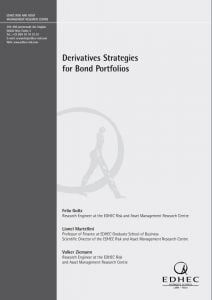

Derivatives Strategies for Bond Portfolios
In this paper, the authors examine how standard exchange-traded fixed-income derivatives (futures and options on futures contracts) can be included in a sound risk and asset management process so as to improve risk and return performance characteristics of managed portfolios. The results show that the non-linear character of the returns on protective option strategies offers appealing risk reduction properties in the pure asset management context. Consequently, such strategies should optimally receive a significant allocation, especially when investors are concerned with minimising extreme risks. A revisited version of this paper was published in the June 2006 issue of the Journal of Fixed Income.
Author(s):
Summary:
In this paper, the authors examine how standard exchange-traded fixed-income derivatives (futures and options on futures contracts) can be included in a sound risk and asset management process so as to improve risk and return performance characteristics of managed portfolios. The results show that the non-linear character of the returns on protective option strategies offers appealing risk reduction properties in the pure asset management context. Consequently, such strategies should optimally receive a significant allocation, especially when investors are concerned with minimising extreme risks. A revisited version of this paper was published in the June 2006 issue of the Journal of Fixed Income.
Register to download PDF
Register/Log in| Type : | Working paper |
|---|---|
| Date : | 21/06/2006 |
| Keywords : |
Asset Allocation |

